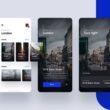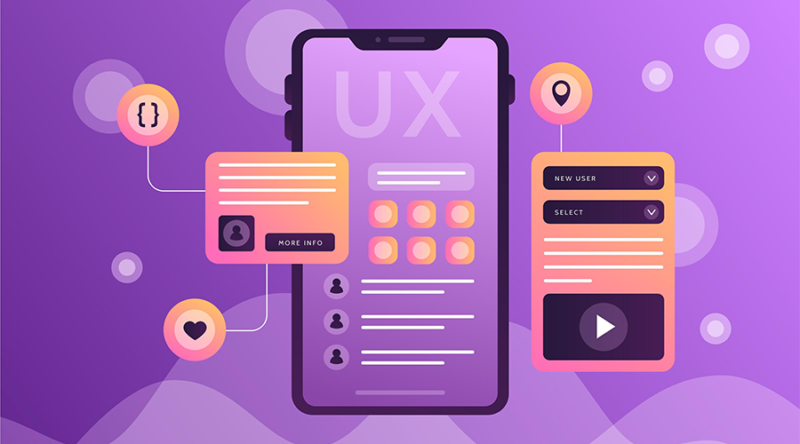In the world of digital products—websites, apps, and even smart devices—user experience plays a major role in determining whether people enjoy using something or leave it frustrated. That’s where UX Design comes in. In this Introduction to UX Design, we’ll walk you through what it is, why it matters, and how it works—especially for beginners.
Let’s get started by answering the big question…
What is UX Design?
UX stands for User Experience, and UX Design is all about how a user feels when interacting with a product or service. While UI (User Interface) Design focuses on how a product looks, UX Design focuses on how it works and feels.
In other words, it’s not just about beauty—it’s about usability, functionality, and delight.
💡 Example:
Imagine you’re shopping online for a new backpack. A great UX design makes it easy to search, filter results, read reviews, add items to your cart, and check out in just a few clicks—no stress, no confusion.
But if a site is slow, hard to navigate, or has too many popups, you’ll probably leave before completing your purchase. That’s the power of UX design in action.
Understanding UX Design
Now that you know what UX Design is, let’s break it down further. At its core, UX Design is about problem-solving—making digital products more intuitive, enjoyable, and efficient for real people.
UX Designers step into the user’s shoes. They ask:
- What does the user need?
- What might confuse or frustrate them?
- How can we make this experience more pleasant?
This means UX Design is not guesswork. Instead, it relies on research, planning, testing, and iteration to deliver better outcomes.
🎯 Goal of UX Design:
To create frictionless experiences that allow users to reach their goals with ease and satisfaction.
What Does UX Design Do?
To better understand the role of UX design, here are three core responsibilities that UX designers focus on:
1. Focuses on the User
UX design always starts with empathy. Designers conduct user research to understand the behaviors, goals, and frustrations of real users. They then use this information to create solutions tailored to the people they’re designing for.
2. Creates a Positive Experience
Good UX doesn’t just “work”—it feels right. From logical navigation to clear feedback messages, everything is designed to keep users comfortable, confident, and in control.
🧭 Example: A clear progress bar during a multi-step sign-up process reduces anxiety and confusion.
3. Solves Problems
UX designers are problem solvers. If users drop off during checkout or can’t figure out how to book a service, the UX designer investigates why—and then reworks the experience to fix it.
❌ Bad UX might involve:
- Unclear menus
- Tiny buttons
- Confusing error messages
- Too many steps to complete a task
✅ Great UX:
- Simplifies tasks
- Anticipates user needs
- Keeps users coming back
Key Elements of UX Design
UX Design is made up of several components that work together to create a complete experience. Here are some of the key building blocks of the UX process:
🧠 1. User Research
This is the first and most essential step. UX designers talk to users, conduct surveys, and observe behavior to learn what users want and need.
Tools: interviews, questionnaires, analytics, and journey mapping.
🧾 2. Wireframes
Wireframes are like blueprints. They are basic sketches or layouts that show the structure of a page or app before any visual design is added.
Goal: Focus on function and placement, not colors or fonts.
⚙️ 3. Prototypes
A prototype is a working version of the product—it may not be fully functional, but it allows users and stakeholders to test the experience and provide feedback.
Tools: Figma, Adobe XD, InVision.
🧪 4. Usability Testing
Once a prototype is ready, it’s time to observe how real users interact with it. Do they get stuck? Do they understand the interface? UX designers collect insights and use them to make improvements.
Outcome: Better usability, fewer errors, and happier users.
🗂 5. Information Architecture (IA)
IA is about organizing content and features in a clear, logical way. This makes it easy for users to navigate and find what they need without confusion.
📁 Example: A clothing site that separates items into “Men,” “Women,” “Kids,” “Sale,” and “New Arrivals” is using good IA.
Why is UX Design Important?
You might be wondering—why invest so much in UX design? Here’s why UX matters more than ever:
😊 1. Improved User Satisfaction
When users can complete tasks quickly and easily, they feel satisfied, and satisfaction builds trust and loyalty.
💸 2. Higher Conversion Rates
Better UX often means more sales, more signups, and more success. For businesses, UX design isn’t just a “nice-to-have”—it’s a profit driver.
📊 Example: Reducing the number of checkout steps can dramatically increase completed purchases.
😤 3. Reduced Frustration
Good UX helps prevent user errors, confusion, and delays. This reduces the number of support requests and increases customer retention.
🏆 4. Competitive Advantage
In a crowded market, UX can be the difference between success and failure. A better user experience gives you an edge over competitors offering similar features.
Final Thoughts: Introduction to UX Design
To sum it up, UX Design is about creating meaningful, intuitive, and enjoyable digital experiences. It’s not about how something looks, but how it works for the people who use it.
From user research to usability testing, from wireframes to information architecture, UX Design is a thoughtful, human-centered process that puts people first.
As we saw in our previous article, What is UI Design?, the best products combine both great UI and great UX to deliver powerful digital experiences. And now that you’ve had your Introduction to UX Design, you’re one step closer to understanding how design shapes the digital world around us.
🌐 Want to learn more? Check out this UX Design guide by the Interaction Design Foundation to deepen your learning.








